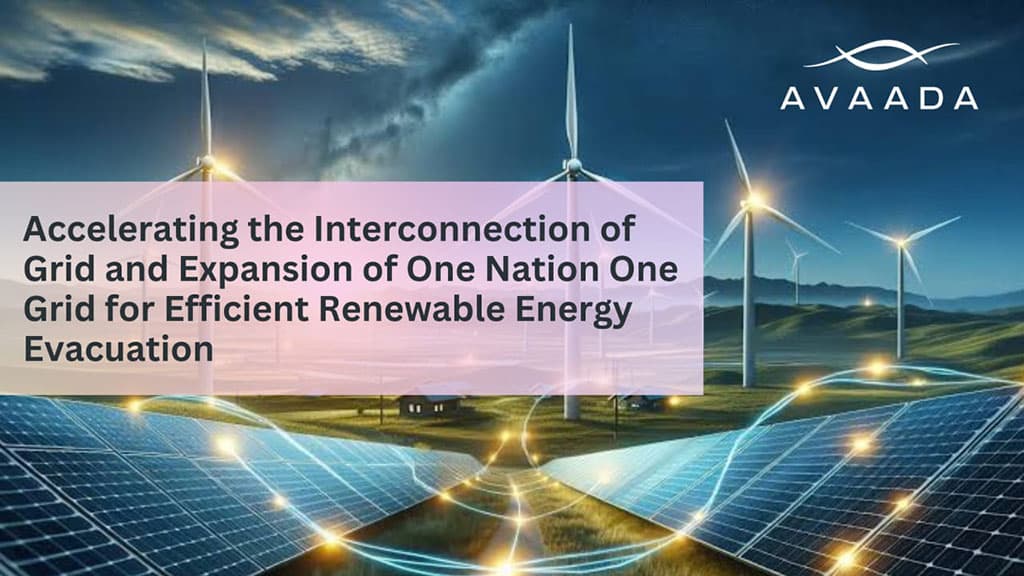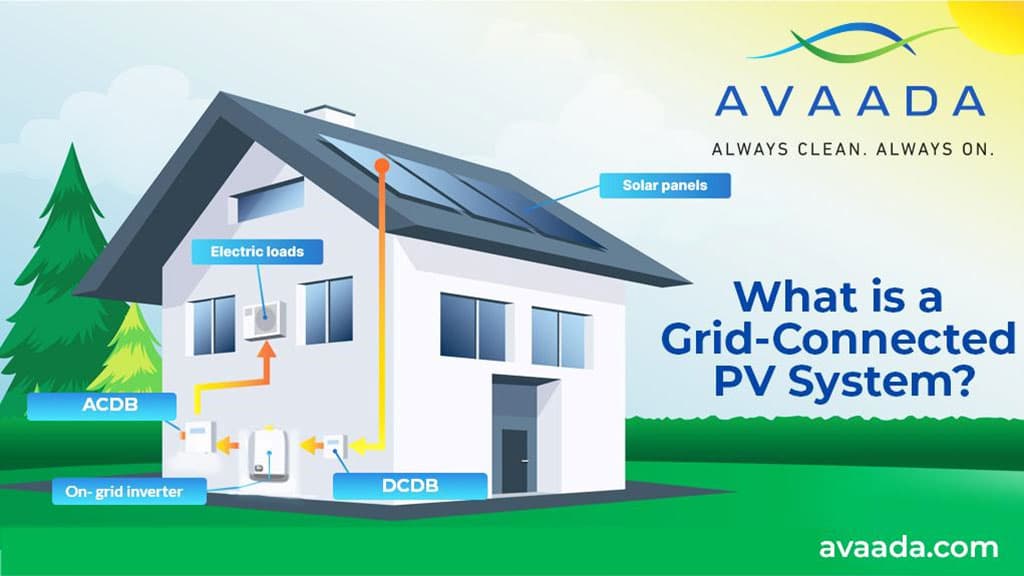The global energy landscape is undergoing a seismic shift. As nations strive for energy security, sustainability, and affordability, renewable energy sources are rapidly gaining traction. The transition to renewable energy sources like solar, wind, BESS and pumped storage projects is essential for achieving global decarbonization goals of Net Zero by 2050. However, integrating these clean energy sources into existing power grids presents significant challenges. The United States, under the Biden Administration, aims for a decarbonized electricity sector by 2035, which requires the deployment of hundreds of gigawatts of renewable energy annually. Yet, the process of interconnecting these resources to the grid can take years due to outdated interconnection procedures. This blog explores the importance of accelerating grid interconnection and expanding the One Nation One Grid initiative to ensure the efficient evacuation of renewable energy.
The expansion of grid infrastructure is crucial for rapid decarbonization: The global renewable energy market is booming. According to the Renewable Capacity Statistics 2023, released by the International Renewable Energy Agency (IRENA), shows that renewable energy continues to grow at record levels despite global uncertainties, confirming the downward trend of fossil – fuel power generation. While many countries increased their renewable capacity in 2022, the significant growth of renewables is persistently concentrated in a few countries and regions like Asia, the USA and Europe. IRENA’s data finds that almost half of all new capacity in 2022 was added in Asia, resulting in a total of 1.63 Terawatt (TW) of renewable capacity by 2022.
The Importance of Grid Interconnection
Grid interconnection refers to the process of connecting new generators or energy storage systems to the electric transmission or distribution grids. This process is critical for integrating renewable energy sources and ensuring that the power they generate can be efficiently distributed to consumers. Better interconnection also reduces the need to curtail RE generation during periods of high production. For example, in China, grid upgrades reduced wind curtailment from 17% in 2016 to 4% in 2020, saving approximately 50 TWh of renewable energy annually. The benefits of a unified grid are:
- Enhanced Reliability and Resilience: By balancing supply and demand over a wider area, a unified grid can lower the risk of blackouts and increase resistance to other disruptions like natural disasters.
- Environmental Impact: A unified grid promotes the shift to a sustainable energy system and lowers greenhouse gas emissions by enabling the integration of renewable energy sources.
- Cost Efficiency: Interconnection reduces the need for redundant generation capacity and leverages economies of scale in both generation and transmission.
- Market Efficiency: A well-connected national grid facilitates cross-state electricity trading, allowing regions with surplus RE to sell it to those in deficit, leading to a more efficient and competitive electricity market.
Current Interconnection Process
Existing serial first-come, first-served study process were designed for a grid powered by a smaller number of large, centralized generators. However, the continued use of this process in the face of increasing number of smaller, decentralized renewable systems has led to backlog of interconnection requests, study delays and inefficiencies. As of 2023, there were over 1,300 GW of generation and 680 GW of storage capacity in interconnection queues across the United States. Most of these requests are for solar (43%), wind (18%), and battery storage projects. These interconnection queue backlogs, and study delays create uncertainty and inhibit project developers’ ability to interconnect generating facilities to the transmission system.
Challenges in the Current Interconnection Process
- Lengthy Delays: The time from submission of an interconnection request to commercial operation has increased significantly. In 2000-2010, the average time was about 24 months for all technologies. By 2011-2021, this had increased to an average of 40 months. For projects completed in 2022-2023, the average wait time was approaching 60 months. This also led to increase in the rate of project withdrawal. These delays can hinder the deployment of median renewable energy projects thereby jeopardizing the country’s goal of net zero for power sector. Therefore, the traditional “first-come, first-served” queues may not be optimal for processing large numbers of RE projects. There is a need for transition from serial first-come, first-served study process to first-ready, first-served cluster study process of interconnection requests. PJM’s implementation of cluster studies in 2022 is projected to reduce study timelines by 50% and decrease study costs by up to 60% for developers.
- High Costs: Existing transmission infrastructure may not have sufficient capacity to accommodate all pending RE projects. Optimal RE resource locations do not align with existing grid infrastructure thereby resulting in higher costs by location. High costs can jeopardize the economic feasibility of projects and lead to a cascade of withdrawals from interconnection queues.
- Queue Backlogs: There are long queues of projects requesting interconnection agreements, with more than 1,350 GW of generation and an estimated 680 GW of energy storage active in transmission interconnection queues as of the end of 2022. From 2000 to 2010, the United States averaged between 500 and 1,000 new transmission interconnection requests each year, corresponding to around 150 to 200 GW per year of proposed generation. Over the last decade, however, new requests have significantly risen to 2,500 to 3,000 each year, representing anywhere from 400 to 750 GW per year of proposed capacity, a 3-5 times expansion. This backlog of interconnection requests significantly delays renewable energy deployment and lead to higher costs for project developers and electricity consumers. Interconnection processes will need to evolve to handle this larger number of requests presently and into the future, as policy and economic drivers continue to motivate significant resource development.
- Complex Procedures: Interconnection procedures are complex and not standardized, making it difficult for developers to navigate the process. This complexity can result in project cancellations and delays. Therefore, there is an urgent need for standardization of interconnection agreements and procedures across the regions.
The Role of the Interconnection Innovation e-Xchange (i2X)
To address these challenges, the US Department of Energy (DOE) launched the Interconnection Innovation e-Xchange (i2X) in June 2022. This initiative convenes stakeholders, including grid operators, utilities, governments, clean energy developers, and researchers, to identify interconnection barriers, share best practices, and test innovative solutions.
Key Activities of i2X
- Data Collection and Analysis: i2X gathers baseline information to track progress and identify successful strategies for improving interconnection practices.
- Technical Assistance: The program provides technical assistance to support stakeholders in enhancing interconnection processes.
- Roadmap Development: i2X is developing roadmaps for the transmission and distribution system grids to systematically identify solutions and improve interconnection processes.
- Stakeholder Engagement: Over 530 organizations have joined i2X as partners, and thousands have actively engaged in i2X workshops to address interconnection challenges collaboratively.
Solutions for Streamlining Interconnection
Transmission Grid Roadmap
- Increase Data Access and Transparency: Developers need accurate grid capacity, constraint and upgrade requirement information to assess project feasibility. Therefore, there is a need for creating database of available grid capacity and upgrade requirements for better visibility of the network. Database should be updated on monthly basis. The timeliness of interconnection data access can help developers site potential projects more effectively and enable better process automation.
- Improve Process and Timing: Streamlining interconnection processes and managing queue volumes more efficiently can reduce delays and improve project viability. Stringent commercial readiness requirements, financial commitments, withdrawal penalties, and study time limits may be enforced for managing queue volumes effectively.
- Promote Economic Efficiency: Improving cost allocation and aligning interconnection with transmission planning can reduce costs and enhance economic efficiency. Reducing study timelines can significantly lower costs. A 2021 study by Lawrence Berkeley National Laboratory found that interconnection costs for solar projects increased by an average of 2.5% for each month of delay in the interconnection process.
- Maintain Grid Reliability: Updating technical requirements for interconnection studies and models can ensure that renewable energy sources support grid reliability and resilience. Also, the existing infrastructure may be upgraded with advanced technologies (e.g. use of high ampacity conductors, dynamic line rating, power flow control,) to create more margins.
Distribution System Roadmap
- Hosting Capacity Analysis (HCA): Developing tools to provide developers with information on where interconnection costs may be lower can reduce exploratory interconnection requests and improve project planning. By identifying optimal connection points, HCA can reduce unnecessary grid upgrades. New York utilities reported a 30% reduction in upgrade costs for DER projects after implementing HCA.
- Flexible Interconnection: Implementing strategies to control generator output in real time can remove the need for costly system upgrades and allow for greater grid utilization. Flexible interconnection offers many benefits like, cost reduction, less interconnection time, minimal or no energy curtailment, enhanced grid utilisation, support for higher renewable targets etc. A 2021 study by the Electric Power Research Institute (EPRI) found that flexible interconnection could reduce connection costs by 30-60% compared to traditional firm interconnection.
- Alternatives to Direct Transfer Trip (DTT): Developing guidelines for alternatives to DTT can reduce costs and complexities, making it easier for DER projects to connect to the grid. NREL studies show that ride-through capabilities in inverters can reduce the need for DTT by up to 80% in typical distribution systems. The CIGRE Working Group B5.37 reported that fault current limiters could eliminate the need for DTT in 60-80% of cases where it was required due to fault current issues.
The One Nation One Grid Initiative
The One Nation One Grid initiative aims to create a unified grid system that facilitates the seamless transmission of electricity across regions. This initiative is crucial for evacuating power generated by renewable energy sources from remote locations to areas with high demand. As of 2024, India has made significant progress in integrating its regional grids. The country now has five regional grids that are interconnected, forming a national grid with an inter-regional transmission capacity of over 150 GW. Despite progress, further expansion is needed to accommodate the growing renewable energy capacity. CEA has projected that India will need to add transmission lines of about 50,000 ckm by 2029-30 to support the renewable energy target of 500 GW. National Renewable Energy Laboratory has suggested that an expanded and well-interconnected grid could reduce power system operation costs in India by 5-6% annually, potentially saving billions of dollars.
Benefits of One Nation One Grid
- Enhanced Grid Reliability: A unified grid can enhance the reliability and resilience of the power system, reducing the risk of blackouts and ensuring a stable power supply. It provides greater inertia, leading to better frequency control. However, expanding interregional transmission by way of developing high-capacity, long-distance HVDC transmission corridors may ensure better management of variable renewable energy sources. A 2023 study by the American Council on Renewable Energy suggests that a national HVDC network could reduce transmission congestion by up to 80%.
- Efficient Power Distribution: A national grid can efficiently distribute power from renewable energy sources, minimizing transmission losses and optimizing resource utilization. It enables power to flow from power surplus to power deficit region thereby lower-cost generation areas to higher-demand regions. In India, the availability of power in rural and urban areas has increased to 20.6 hours and 23.8 hours respectively in 2023, with a marginal decrease in average market clearing price in the power exchanges with respect to 2012.
- Increased Renewable Integration: A unified grid system can better accommodate the variable nature of renewable energy sources, such as solar and wind, ensuring that excess power can be stored or transmitted as needed. Germany’s integrated grid has allowed it to achieve moments of up to 77% renewable energy penetration in 2020.
- Economic Benefits: Streamlined interconnection processes and a unified grid can reduce costs for developers, making renewable energy projects more economically viable and attractive. A 2022 study by Americans for a Renewable Energy Grid found that increased transparency and streamlined processes in interconnection could reduce project development costs by 5-10%.
Conclusion
The integration of renewable energy into the national grid is a complex but essential task for achieving a sustainable energy future. However, accelerating the interconnection of the grid and expanding the ‘One Nation One Grid’ initiative are essential steps toward achieving a decarbonized electricity sector. By streamlining interconnection processes, reducing costs, and enhancing grid reliability, we can ensure the efficient evacuation of power generated by solar, wind, and pumped storage projects. Collaborative efforts, innovative solutions, and sustained stakeholder engagement are crucial to overcoming the challenges of grid interconnection and building a clean, reliable, and resilient electric grid for the future.









